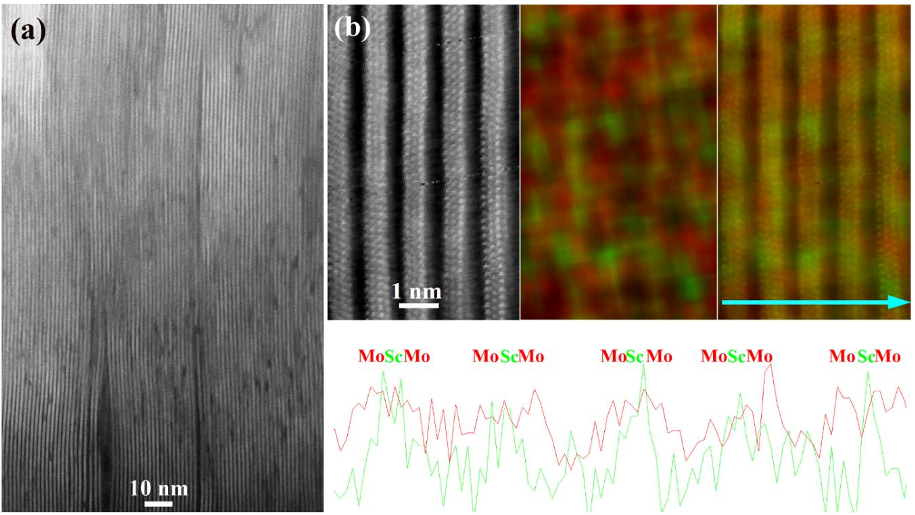Q2. What are the contributions in "Theoretical stability and materials synthesis of a chemically ordered max phase, mo2scalc2, and its two-dimensional derivate mo2scc2 mxene" ?
The authors present theoretical prediction and experimental evidence of a new MAX phase alloy, Mo2ScAlC2, with out-of-plane chemical order. Evaluation of phase stability was performed by ab initio calculations based on Density Functional Theory, suggesting that chemical order in the alloy promotes a stable phase, with a formation enthalpy of -24 meV/atom, as opposed to the predicted unstable Mo3AlC2 and Sc3AlC2.

![Fig. 2. (a) HR(S)TEM micrograph shows the laminated structure of the MAX phase along the [112�0] zone axis. (b) The overlapping EDX elemental map for Mo, Sc and Al reveals the chemically ordered distribution of these elements within the sample.](/figures/fig-2-a-hr-s-tem-micrograph-shows-the-laminated-structure-of-fama3fnd.png)

